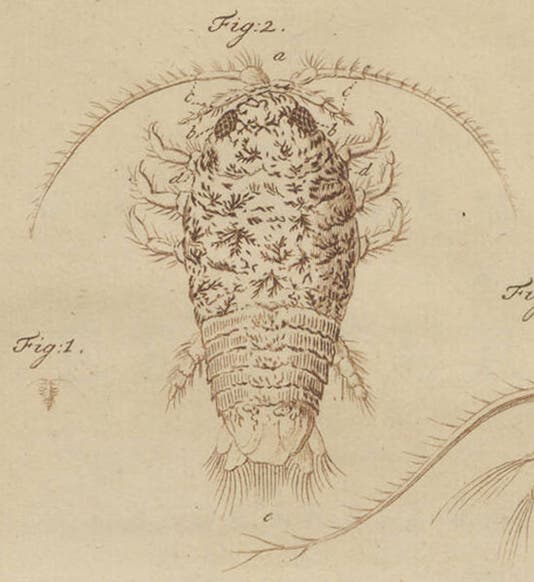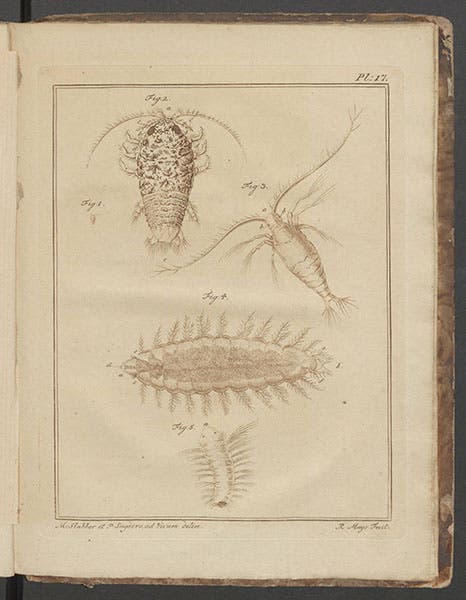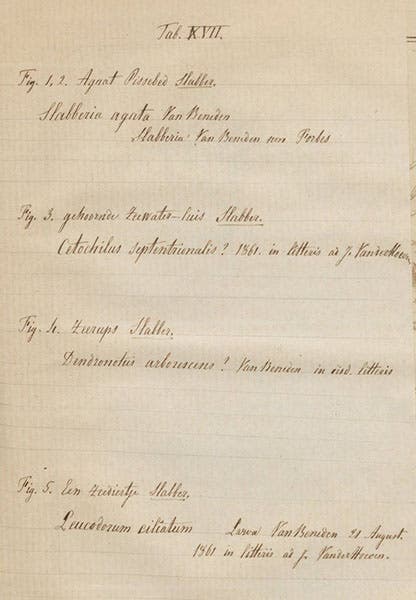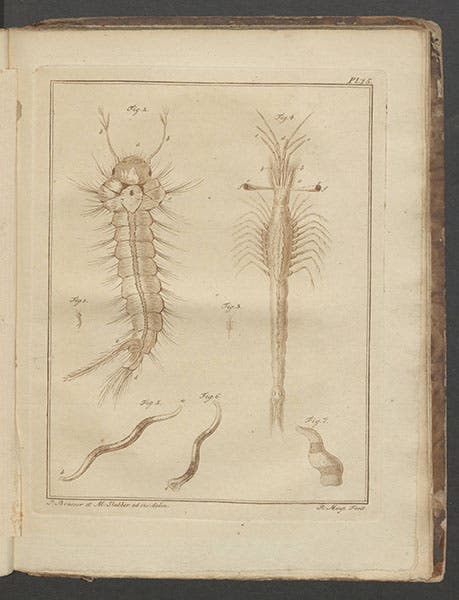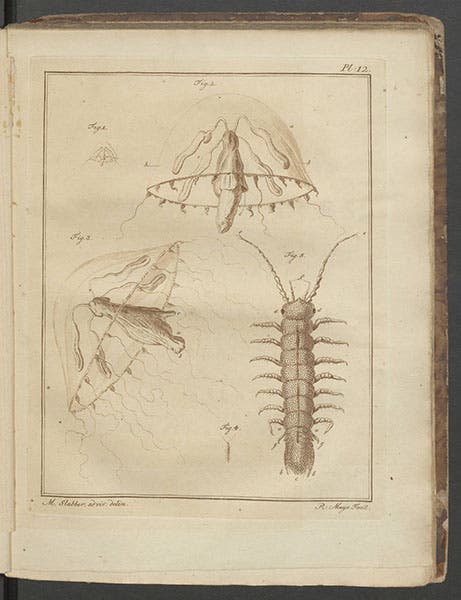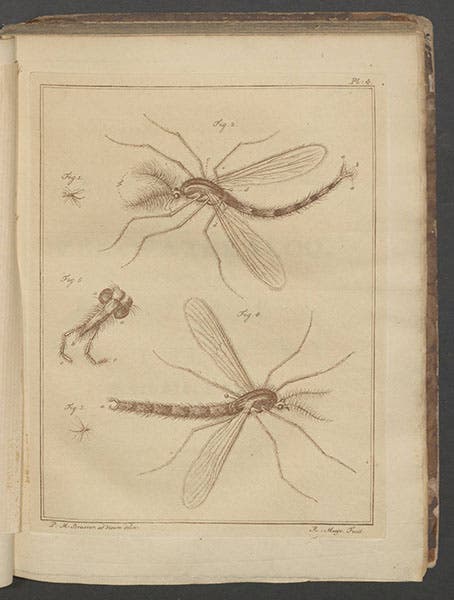Scientist of the Day - Martinus Slabber
Martinus Slabber, a Dutch public official and amateur naturalist, was born Oct. 31, 1740. Slabber is not very well known outside of the Netherlands – there is no English Wikipedia article that discusses him, for example – but we have a remarkable book by Slabber in our collection that suggests that he merits more attention that he has received. The book is called Natuurkundige verlustigingen behelzende microscopise waarneemingen van in- en uit-landse water- en land-dieren (Natural Philosophical Delights involving Microscopic Observations of Domestic and Foreign Water and Land Animals, 1778), and it consists of eighteen fascicles, each with its own title page and dedication page, each devoted to two or three kinds of marine invertebrates, and each with one engraved plate, four of which we reproduce here. You will see at a glance that the engravings are unusually attractive, printed in sepia so they look almost like pencil or wash drawings. Some of the plates were drawn by Slabber alone, some working with collaborators.
In our copy, each of the plates is preceded by a smaller tipped-in sheet, on which Slabber's name for each species on the plate is hand-written in pen, followed by the name adopted by various 19th-century authorities such as Pierre-Joseph van Beneden or Jan van der Hoeven (third image). Sometimes these notes reveal that the organism has since been named after Slabber, as is the case with Figs. 1 and 2 on plate 17 (second image), a speckled sea louse that Slabber called Agaat Pissebed, and which Van Beneden, following Edward Forbes, named Slabberia agata. We show a detail of the sea louse as our lead image. The animal is now, unfortunately for Slabber, known as Eurydice pulchra.
Another interesting creature on this plate is the copepod, Fig. 3, now called Cetochilus septentrionalis, with no mentioin of Slabber. Fig. 4 depicts a marine organism that Slabber refers to as Zee-rups; we now know it as Dendronotus frondosus, a nudibranch sea slug.
Three quite different species are show on plate 15 (fourth image): fig. 2 is a mosquito larva; figs. 5-7 below show a species of worm; and at right, fig. 3 (life-size) and fig. 4 (magnified) depict a wonderful stalked shrimp, with wide-spread eyes, that we now call Mesopodopsis slabberi, after our scientist of the day.
Plate 12 (fifth image) depicts two medusae, or jellyfish, which Slabber was apparently the first to describe, since they are now called Thaumantias cymbaloidea (Slabber, 1775).
Plate 4 (sixth image) shows two phantom midges, the larvae of which are known as glassworms. We also include the title page as our last image, in case we have screwed up transcribing the Dutch title, which is not a language with which we feel at home.
It strikes us that Slabber’s book would benefit from scrutiny by a scholar who studies Dutch science in its social setting. With 18 separate dedicatees, it ought to be possible to reconstruct the elaborate social network within which Slabber functioned.
Dr. William B. Ashworth, Jr., Consultant for the History of Science, Linda Hall Library and Associate Professor emeritus, Department of History, University of Missouri-Kansas City. Comments or corrections are welcome; please direct to ashworthw@umkc.edu.

